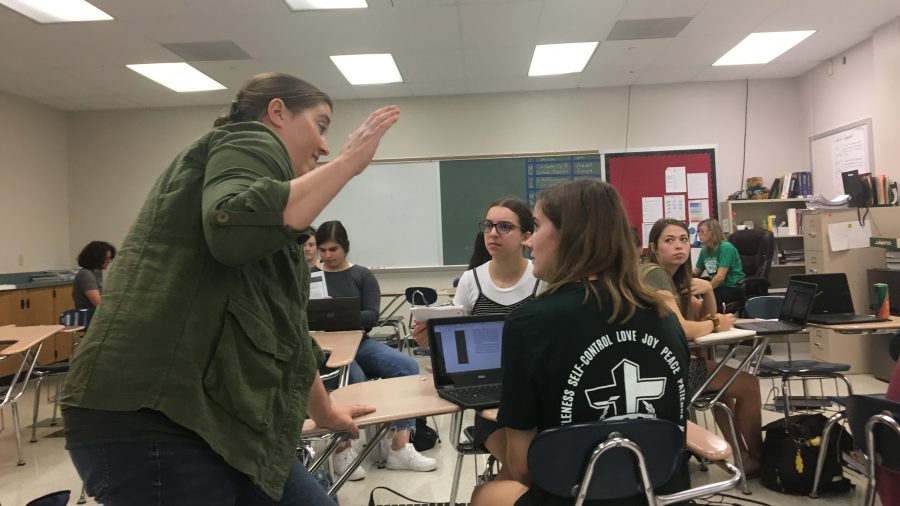Rock Bridge High School: “Where learning is for life.” If learning is for life, then why aren’t we learning something useful?
Is it really necessary to learn something that I already know (as every teacher’s nightmare of a student would say)? Of course this doesn’t include the core curriculum, math, science or English classes but those such as culinary or child development. For students working from 5-9 p.m. every day, or 50 percent of youth ages 16 to 24 in 2018 according to Child Trends, the skills learned in practical arts classes aren’t really essential, except in order to graduate.
A practical art course can be defined by the term “function.” In order to earn this credit, a student must demonstrate their ability to complete assignments hands-on. Many take MyCuisine or Interior Design to get the credit out of the way.
Teenagers can be employed in the workforce as young as 14, the same age a student enters high school. Oftentimes, however, kids begin to work even younger. For those with younger siblings, or someone like me who babysat before they could drive, many teenagers try and earn money far younger than 14. On top of employment, school and homework becomes more strenuous while sleep gets pushed back as kids get older, especially for my peers who tend to take on the closing shift at any given place of work.
Then, every other weekday, we’re expected to relearn these skill sets in a useless 90 minute period. There is so much more a student can be doing with his or her time, such as preparing for the future or working towards good grades in classes that are important. Isn’t that what high school is actually equipping us for?
The sole reason countless students waste their time learning skills they already have from the real world is because our education system requires it every year in order to walk across that stage, diploma in hand, in May.
The only way to rectify this seemingly waste of time and provide an education that is actually useful is to exempt hard-working students, those that exhibit the skills needed to pass the course, from the practical arts credit requirement. Some students already demonstrate an ability to apply themselves to the workforce, which is way more useful than sitting in a classroom doing simulations of work or pretending to, as many merely take a blow-off practical arts credit for an easy good grade. Yes, these classes can be fun, but they shouldn’t be required if you are able to illustrate the skills needed to pass the class. Rather, the credit should be optional.
One solution that doesn’t gut the practical art credit completely would be to allow students to “prove” their skills by having teachers exempt their classes if students can show they have the proficient skills to pass the course at the end of the term. This way, high schoolers who haven’t completely mastered the skill can learn it in a semester or two and those that have can scrape by altogether with a passing grade without actually taking the class. A solution that doesn’t waste unnecessary time and still ensures that students have the required credits to graduate.
Additionally, teens don’t need the added stress when it adds nothing to their education. We’re already way too busy worrying about our grades in classes that will continue to challenge us in the future, like those teaching us how to properly write essays or accurately complete complex math problems. A New York University (NYU) study which examined top high school students’ stress and coping mechanisms found that the four years that are supposed to highlight one’s adolescence are instead filled with an endless cycle of “school, homework, extracurricular activities, sleep, repeat,” said a research scientist on the study. Students are constantly enduring a never ending series of stress, school and work from ages 14 to 18 and, to add a practical arts credit to all of this that provides no benefit to students is counterproductive.
High schools may be able to ease the pressure of high achieving academics by just making it easier to acquire that practical art credit because we already know how to make quesadillas, change diapers and sew. We don’t need to be tested on it unless our schools want to make sure the student is capable of acquiring the credit on their own. In that case, a hands-on evaluation to “test out of” the course should be required.
Of course, practical arts classes can allow students to practice and perfect real-world skills and be graded on it, which can be relatively straightforward compared to other classwork. Students can take these courses and, as long as they put in a decent amount of effort, will be capable of acquiring a good grade. This can help struggling teenagers who need relief from more difficult classes. But, that still doesn’t help the fact that they are pointless.
High school students have so much more to deal with in their daily lives than to relearn the practical skills they already know. Giving us the option to take classes we actually care about or the ability to skip courses that are redundant to our lives outside of school would remedy our impractical system of practical arts. So, let’s make the requirement less difficult to acquire and spend more time and effort on things that do matter.
What do you think about the practical arts credit? Let us know in the comments below.














































































